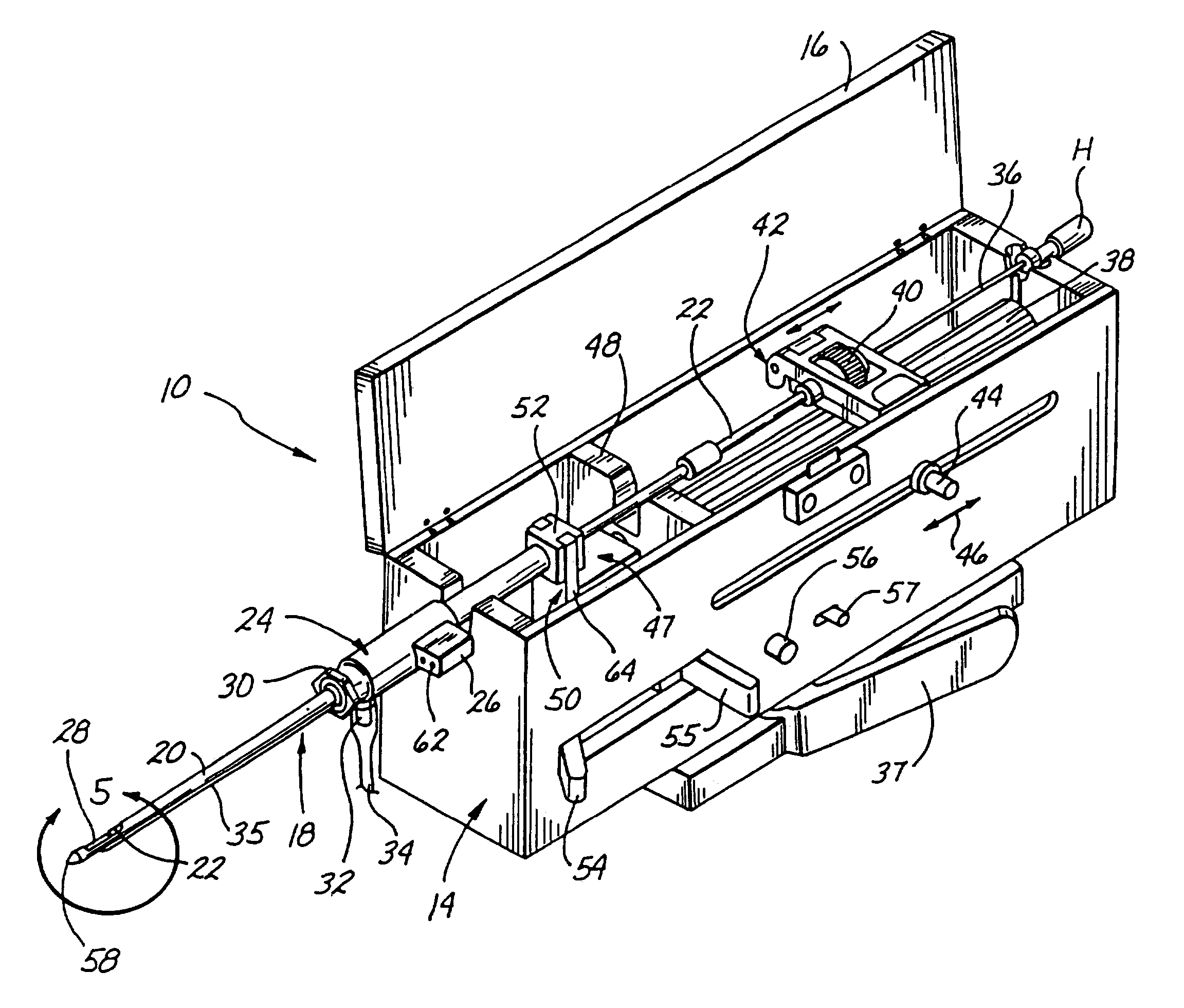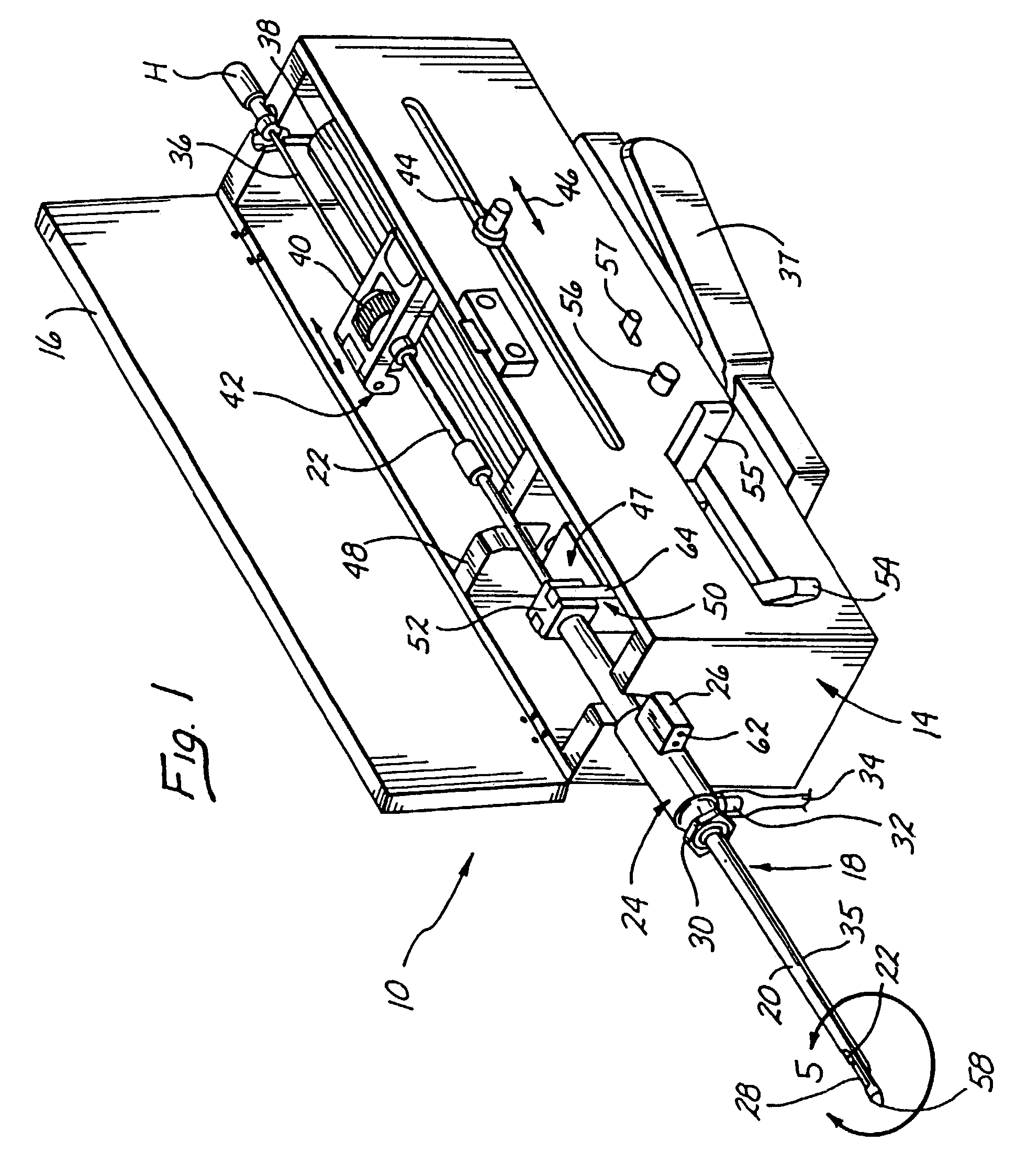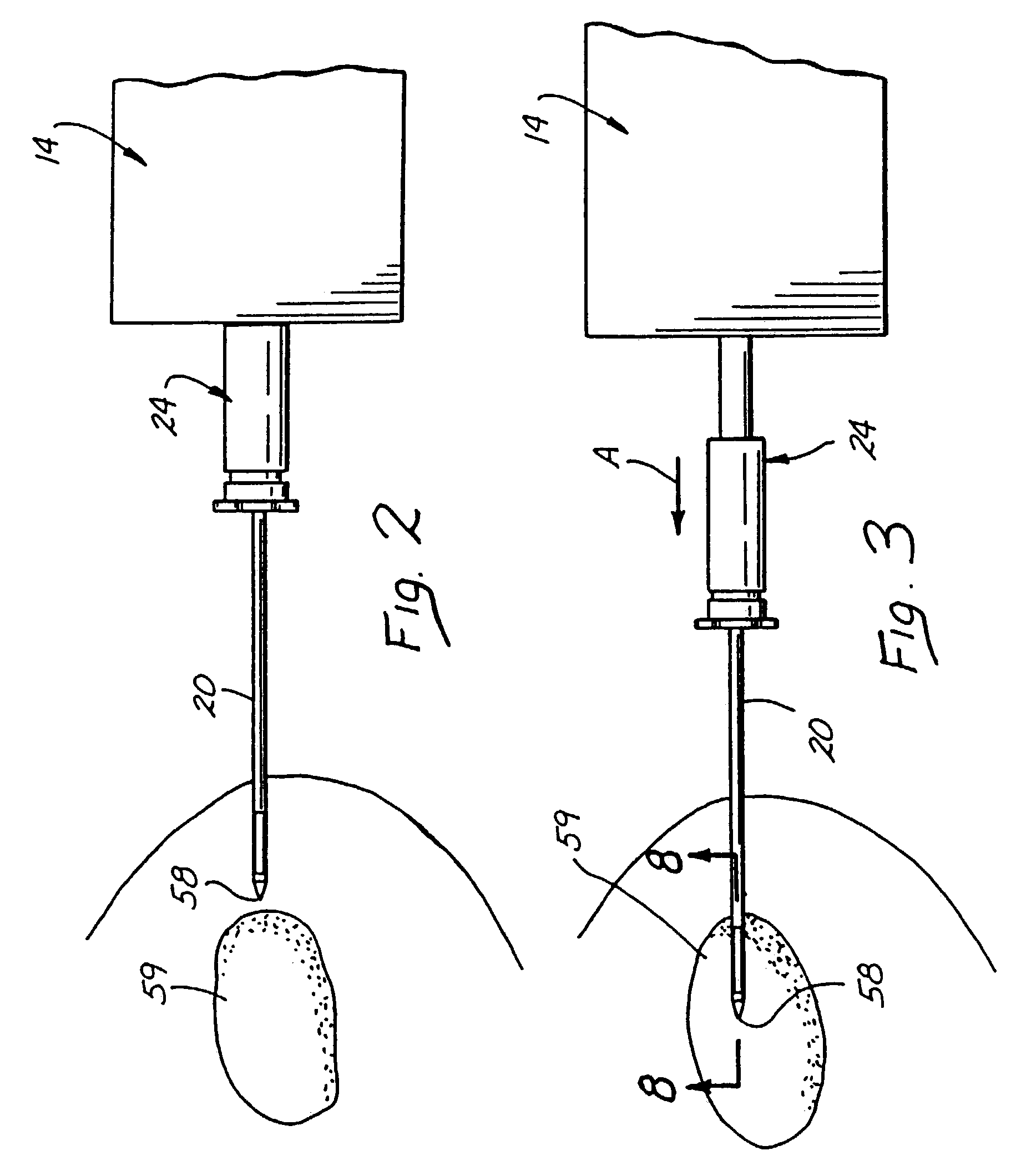Methods and devices for automated biopsy and collection of soft tissue
a tissue and automatic technology, applied in the field of tissue sampling methods and devices, can solve the problems of no single procedure is ideal for all cases, and inability to accurately measure, etc., to achieve convenient and inexpensive fabrication, improve and more versatile operation
- Summary
- Abstract
- Description
- Claims
- Application Information
AI Technical Summary
Benefits of technology
Problems solved by technology
Method used
Image
Examples
second modified embodiment
[0090]FIGS. 29 and 30 illustrate the needle assembly in the FIG. 25 device. Again, like elements are designated by like reference numerals, followed by a b. In this embodiment, the inner needle 100b has been modified to include an “alligator” tip 140, which includes jaws 142, 144 and teeth 146. When the spring 116 is released, the inner needle 100b shoots distally and captures tissue in the opening 148 within the jaws 142, 144. Then, when the spring 114 is released, the outer cannula 98b shoots distally, severing tissue along the sides of the tissue sample opening 148 as it moves distally, and also forcing the jaws 142, 144 shut, so that they “bite off” the end of the tissue sample 138b, as illustrated in FIG. 30. This embodiment also may be adapted for use with the device of FIG. 1, if desired.
third modified embodiment
[0091]Finally, FIGS. 31–34 illustrate the needle assembly in the FIG. 25 device. In this embodiment, like elements are designated by like reference numerals, followed by a c. Like the FIG. 29 embodiment, the inner needle or “grabber”100c has been modified, this time to include a plurality of hooked extractors 150 extending from its distal end The outer cannula 98c includes a sharpened cutter point 152. In operation, initially the grabber 100c is retracted into the cutter 98c while the device is in its energized state, the point 152 being used to pierce the body wall 154 as the device is guided to the desired tissue sample 138c (FIG. 32). Then, as illustrated in FIG. 33, the grabber 100c is shot distally by means of the release of spring 116. As it travels distally, the hooked extractors 150 become extended and latch onto the tissue sample 138c. Then, once the second spring 114 is released, the cutter 98c shoots distally, collapsing the hooked extractors 150 and severing the tissue s...
PUM
 Login to View More
Login to View More Abstract
Description
Claims
Application Information
 Login to View More
Login to View More - R&D
- Intellectual Property
- Life Sciences
- Materials
- Tech Scout
- Unparalleled Data Quality
- Higher Quality Content
- 60% Fewer Hallucinations
Browse by: Latest US Patents, China's latest patents, Technical Efficacy Thesaurus, Application Domain, Technology Topic, Popular Technical Reports.
© 2025 PatSnap. All rights reserved.Legal|Privacy policy|Modern Slavery Act Transparency Statement|Sitemap|About US| Contact US: help@patsnap.com



